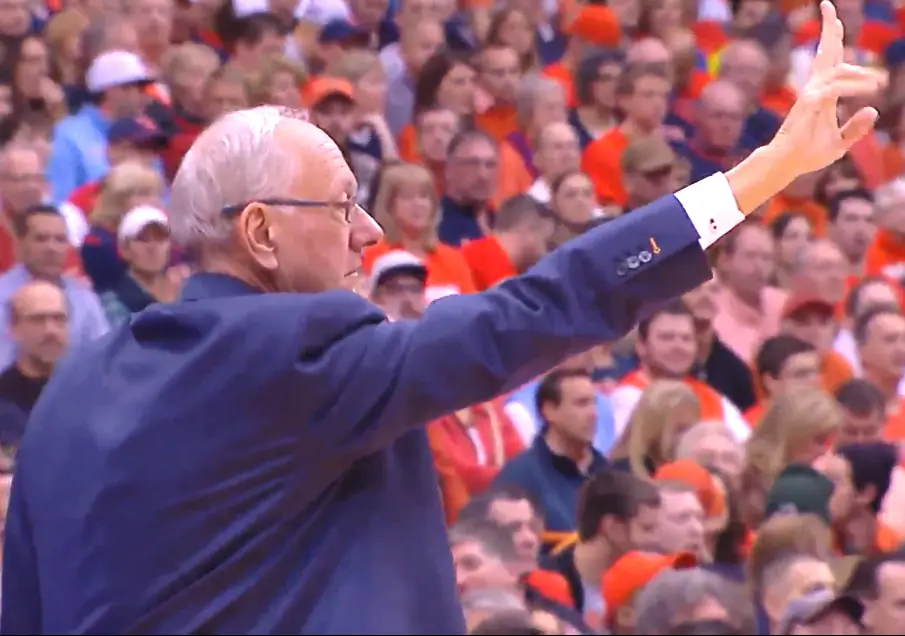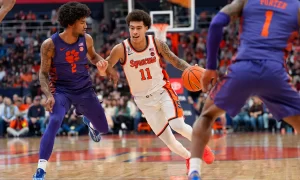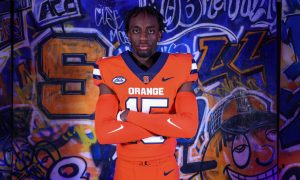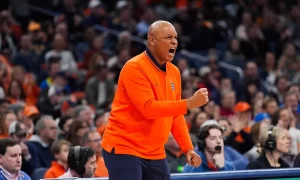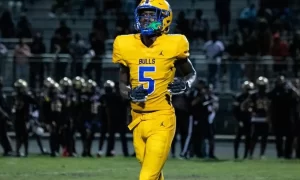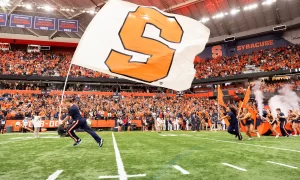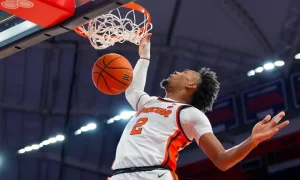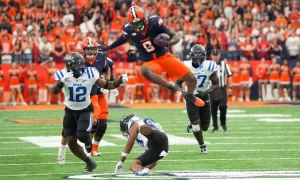At halftime on Saturday afternoon, everything seemed right in Philly.  Up and down the lineup, the Orange was getting contributions, and the team looked like it had finally taken a step forward towards fixing the kinks that had plagued the offense so far.
But, the short break stunted any momentum the Orange had built.  After scoring 43 points on 63 percent shooting in the first half, the Orange offense came to a halt in the second half, putting up just 26 points.
One big reason for the team’s first half success was the ball movement.  The team was moving the ball better than it had at any point in the season, against a very good defensive Wildcats team.  The team was sharing the ball around the whole court, distributing cross-court passes and looking like a competent offensive team.  In fact, of the team’s 17 made shots, 13 were assisted.  Compare that to just five assists on 11 baskets in the second half, and it isn’t hard to understand why the team had to work much harder to get good looks at the hoop.
It also became pretty clear that the Orange would struggle without the three ball falling.  So, in the first half when the team was 4-of-6 from behind the arc, the spacing and the ball movement looked pretty.  But, after going 0-of-5 from three in the second half, the offense looked stagnant.
Watching the offense operate in the second half was painful.  Instead of constant movement, players like Rakeem Christmas were often stranded at the top of the three-point line with pressure in their faces.  Christmas, although a decent passer, should not have to touch the ball to start every possession.  When he was able to dump the ball off to another teammate, there was no crisp passing.  Instead, Kaleb Joseph, Mike Gbinije, and Trevor Cooney were often left alone with a high screen and couldn’t do much with the defensive pressure.  This made the players create their own shots, and made it much harder for the ball handlers to drive into the paint.
The Orange drew seven fouls in the first half and shot eight free throws.  In the second half, Villanova didn’t rack up fouls until they had to in order to get back into the game.  At one point, the second half team fouls were 8-1 favoring Villanova.  Without getting into the paint, the team couldn’t play the inside-out game that helped so much in the first half.
The last number to look at is 15: the number of offensive rebounds allowed by SU.  The bigs (especially Christmas) were often just standing around under the hoop, which gave the Wildcats plenty of second chance points (12) and allowed them to get back in the game.
In one game, fans were able to see the maximum potential of the team and the absolute worst the Orange had to offer.  Sure, playing the seventh-best team in the nation on the road wasn’t a game that the Orange had any business winning, but watching the players fail to close out the game was heartbreaking.
Posted:  Jason Weingold


